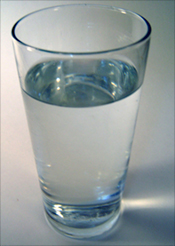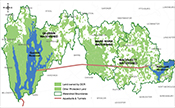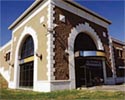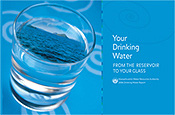PRESS RELEASE - For Immediate Release
(617) 788-1105, <ria.convery@mwra.state.ma.us>
The Test Results Are In:
No Pharmaceuticals
Found in MWRA Water
|
In early March, the Associated Press broke a story about traces of pharmaceuticals found in some of the nation’s water supplies. The AP reporters compiled the results of tests from various water systems around the country and identified 36 pharmaceutical compounds. These compounds are not regulated by the EPA and water suppliers do not normally test for them.
The Massachusetts Water Resources Authority did not expect to find any in the water supplied to 50 communities in eastern and central Massachusetts because the source reservoirs are so well protected and because the ozone treatment provided at the Carroll Water Treatment Plant would be effective at destroying many of them if they were present.
“But, just to be sure, we did test,” said MWRA executive director Frederick A. Laskey, “and the results confirmed that there are no traces of pharmaceuticals in the water we deliver to the 2.3 million customers in the MWRA service area.”
MWRA used a laboratory that was able to test for a well-rounded selection of 31 pharmaceuticals, hormones and potential endocrine disrupting compounds. Samples were taken both before treatment (raw water) and after treatment (finished water). All of these compounds were “non-detects” in the finished water samples. The testing included the most prevalent of those compounds:
|
All of these compounds were “non-detects” in both raw (untreated) and finished (fully treated) water samples.
MWRA Water Comes From Well Protected Sources
Almost all other water systems take their supply from rivers and lakes into which wastewater is discharged. The principal source of many of the trace amounts of pharmaceutical chemicals found in those supplies is from wastewater.
MWRA's protected watersheds have NO wastewater discharges into the reservoirs or tributaries. Any area within the MWRA watershed which has dense enough development to require sewers has those sewers pumped to a treatment plant OUTSIDE the watershed.
MWRA's watersheds are so well protected that Federal and State regulations only require disinfection treatment (without the additional of a filtration removal step). Most other water systems have sources which are less protected, more developed, and more polluted, and even much more extensive treatment, may find additional chemicals in their water.
MWRA owns over 150 square miles of the land around its reservoirs of its watersheds, including all the land around the reservoir and almost all of the most critical lands close to the streams feeding them. Most of the remaining land is undeveloped forest and wetlands. The watersheds are carefully monitored by the Massachusetts Department of Conservation and Recreation.
See maps and additional information at http://www.mwra.com/04water/html/watshed.htm and at http://www.mass.gov/dcr/waterSupply/watershed/water.htm
Another possible source that affects many other water systems is extensive livestock operations. Natural and artificial hormones and other pharmaceutical compounds can runoff from these operations into streams and get into water supplies. MWRA has purchased and eliminated almost every commercial livestock operation within its watersheds.
MWRA's Ozone Treatment Would Destroy Most Pharmaceutical Chemicals
In 2005, MWRA began treating the water at the new John J. Carroll Water Treatment Plant, using a state of the art ozonation system. In addition to providing excellent disinfection, and improved taste and clarity, ozone is a powerful oxidant. While MWRA did not find any pharmaceutical compounds in its source water, it is reassuring that recent research indicates that the type of ozone disinfection process currently being used by MWRA is effective at oxidizing and destroying many of these types of compounds.
What About the Wastewater?
While MWRA does not expect to find any of these pharmaceutical compounds in the drinking water, they are, of course, in the wastewater. Any natural or artificial chemical excreted by people or dumped into sinks and toilets ends up in wastewater.
MWRA and many other wastewater agencies have been concerned about this issue, and are working to understand the implications of their presence and to reduce them at the source. After being treated at the Deer Island wastewater treatment plant, MWRA's treated wastewater is discharged 9.5 miles into deep water in Massachusetts Bay, far from any water supplies.
You can help by properly
disposing of any excess drugs. While there are currently no programs in
the metro Boston area that allow you to return excess drugs to the pharmacy,
you can still help out. Don't flush them down your toilet; double bag
them in plastic and put them in the trash.
###
Updated June 19, 2008



